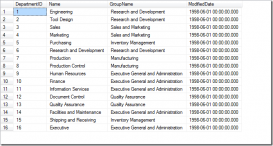废话不多说了,具体代码如下所示:
|
1
2
3
4
5
6
7
8
9
10
11
12
13
14
15
16
17
18
19
20
21
22
23
24
25
26
27
28
29
30
31
32
33
34
35
36
37
38
39
40
41
42
43
44
45
46
47
48
49
50
51
52
53
54
55
56
57
58
59
60
61
62
63
64
65
66
67
68
69
70
71
72
73
74
75
76
77
78
79
80
81
82
83
84
85
86
87
88
89
90
91
92
93
94
95
96
97
98
99
100
101
102
103
104
105
106
107
108
109
110
111
112
113
114
115
116
117
118
119
120
121
|
--SYSTEM表空间不足的报警 登录之后,查询,发现是sys.aud$占的地方太多。 SQL> select owner, segment_name, segment_type, sum(bytes)/1024/1024 space_m from dba_segments where tablespace_name = 'SYSTEM'group by owner, segment_name, segment_type having sum(bytes)/1024/1024 >= 20 order by space_m desc; 4 5 6 7 OWNER SEGMENT_NAME SEGMENT_TYPE SPACE_M -------- ------------------------------- ------- SYS AUD$ TABLE 4480 SYS IDL_UB1$ TABLE 272 SYS SOURCE$ TABLE 72 SYS IDL_UB2$ TABLE 32 SYS C_OBJ#_INTCOL# CLUSTER 27 SYS C_TOID_VERSION# CLUSTER 24 6 rows selected. SQL> 查看是哪个记得比较多。 col userhost format a30 select userid, userhost, count(1) from sys.aud$ where ntimestamp# >=CAST(to_date('2014-03-01 00:00:00', 'YYYY-MM-DD hh24:mi:ss') AS TIMESTAMP) group by userid, userhost having count(1) > 500 order by count(1) desc; 再继续找哪天比较多。 select to_char(ntimestamp#, 'YYYY-MM-DD') audit_date, count(1) from sys.aud$ where ntimestamp# >=CAST(to_date('2014-03-01 00:00:00', 'YYYY-MM-DD hh24:mi:ss') AS TIMESTAMP) and userid = 'xxxx' and userhost = 'xxxx'group by to_char(ntimestamp#, 'YYYY-MM-DD') order by count(1) desc; select spare1, count(1) from sys.aud$ where ntimestamp# between CAST(to_date('2014-03-10 00:00:00', 'YYYY-MM-DD hh24:mi:ss') AS TIMESTAMP) and CAST(to_date('2014-03-11 00:00:00', 'YYYY-MM-DD hh24:mi:ss') AS TIMESTAMP) and userid = 'xxxx' and userhost = 'xxxx'group by spare1 ; select action#, count(1) from sys.aud$ where ntimestamp# between CAST(to_date('2014-03-10 00:00:00', 'YYYY-MM-DD hh24:mi:ss') AS TIMESTAMP) and CAST(to_date('2014-03-11 00:00:00', 'YYYY-MM-DD hh24:mi:ss') AS TIMESTAMP) and userid = 'xxxx' and userhost = 'xxxx'and spare1 = 'xxxx'group by action# order by count(1) desc; 结果如下: ACTION# COUNT(1) ---------- ---------- 101 124043 100 124043 SQL> 其实是上次打开的audit一直没有关闭。 关闭: SQL> noaudit session; 清空: truncate table sys.aud$; ------------------------------------------------------------------------ 实战 ------------------------------------------------------------------------ --1,查询表空间占用情况 select dbf.tablespace_name as tablespace_name, dbf.totalspace as totalspace, dbf.totalblocks as totalblocks, dfs.freespace freespace, dfs.freeblocks freeblocks, (dfs.freespace / dbf.totalspace) * 100 as freeRate from (select t.tablespace_name, sum(t.bytes) / 1024 / 1024 totalspace, sum(t.blocks) totalblocks from DBA_DATA_FILES t group by t.tablespace_name) dbf, (select tt.tablespace_name, sum(tt.bytes) / 1024 / 1024 freespace, sum(tt.blocks) freeblocks from DBA_FREE_SPACE tt group by tt.tablespace_name) dfs where trim(dbf.tablespace_name) = trim(dfs.tablespace_name) --2,查看哪里占的比较多 SYSTEM 为step1中查询 tablespace_name 内容 select owner, segment_name, segment_type, sum(bytes)/1024/1024 space_m from dba_segments where tablespace_name = 'SYSTEM'group by owner, segment_name, segment_type having sum(bytes)/1024/1024 >= 20 order by space_m desc--3,查看是哪个记得比较多 count(1) 越大,说明占得比较多 select userid, userhost, count(1) from sys.aud$ where ntimestamp# >=CAST(to_date('2014-03-01 00:00:00', 'YYYY-MM-DD hh24:mi:ss') AS TIMESTAMP) group by userid, userhost having count(1) > 500 order by count(1) desc--4,再继续找哪天比较多 userid userhost 为上一步查询内容 select to_char(ntimestamp#, 'YYYY-MM-DD') audit_date, count(1) from sys.aud$ where ntimestamp# >=CAST(to_date('2015-03-01 00:00:00', 'YYYY-MM-DD hh24:mi:ss') AS TIMESTAMP) and userid = 'userid' and userhost = 'userhost'group by to_char(ntimestamp#, 'YYYY-MM-DD') order by count(1) desc; select spare1, count(1) from sys.aud$ where ntimestamp# between CAST(to_date('2016-03-10 00:00:00', 'YYYY-MM-DD hh24:mi:ss') AS TIMESTAMP) and CAST(to_date('2016-12-11 00:00:00', 'YYYY-MM-DD hh24:mi:ss') AS TIMESTAMP) and userid = 'userid' and userhost = 'userhost'group by spare1 ; --spare1 为上一步查询内容 select action#, count(1) from sys.aud$ where ntimestamp# between CAST(to_date('2016-03-10 00:00:00', 'YYYY-MM-DD hh24:mi:ss') AS TIMESTAMP) and CAST(to_date('2016-12-11 00:00:00', 'YYYY-MM-DD hh24:mi:ss') AS TIMESTAMP) and userid = 'userid' and userhost = 'userhost'and spare1 = 'Administrator'group by action# order by count(1) desc--5,关闭seeion noaudit session; --6,清空: truncate table sys.aud$; |
总结
以上所述是小编给大家介绍的System表空间不足的报警,希望对大家有所帮助,如果大家有任何疑问请给我留言,小编会及时回复大家的。在此也非常感谢大家对服务器之家网站的支持!
原文链接:http://blog.csdn.net/woshimyc/article/details/78280423












